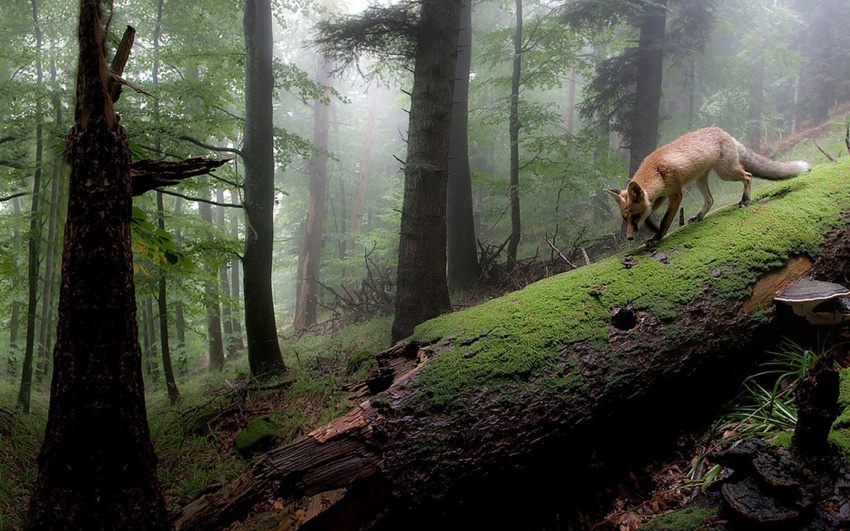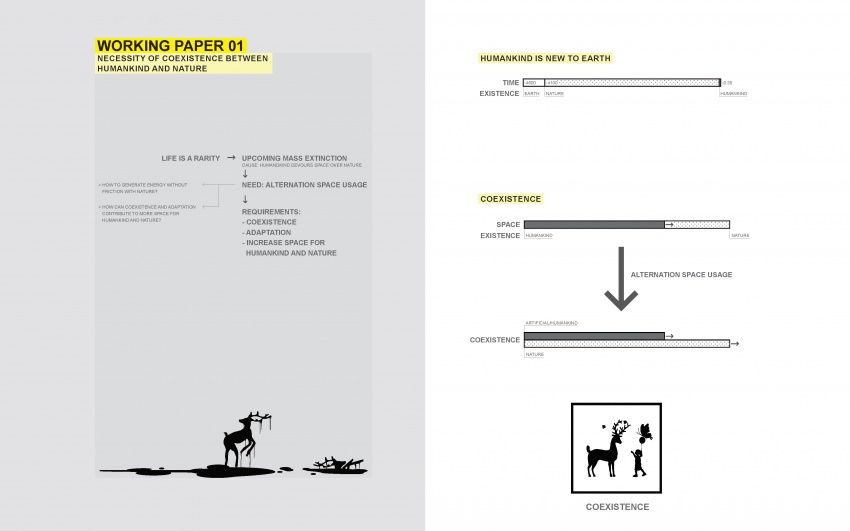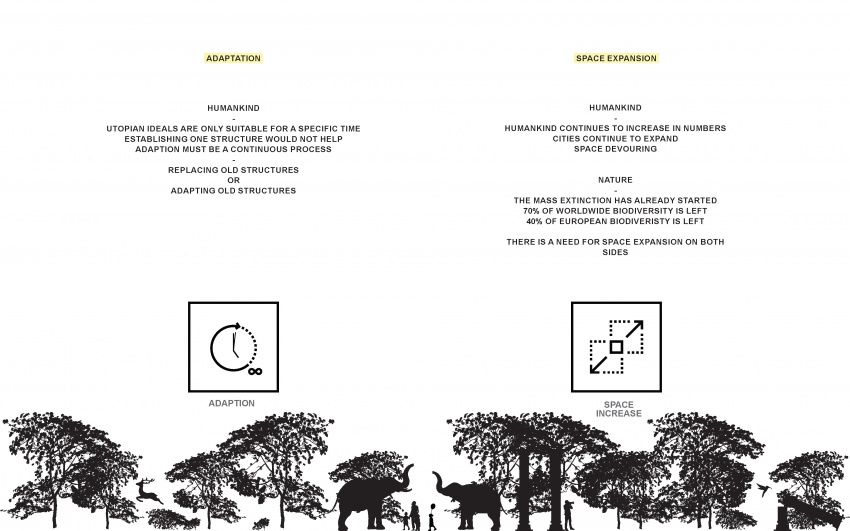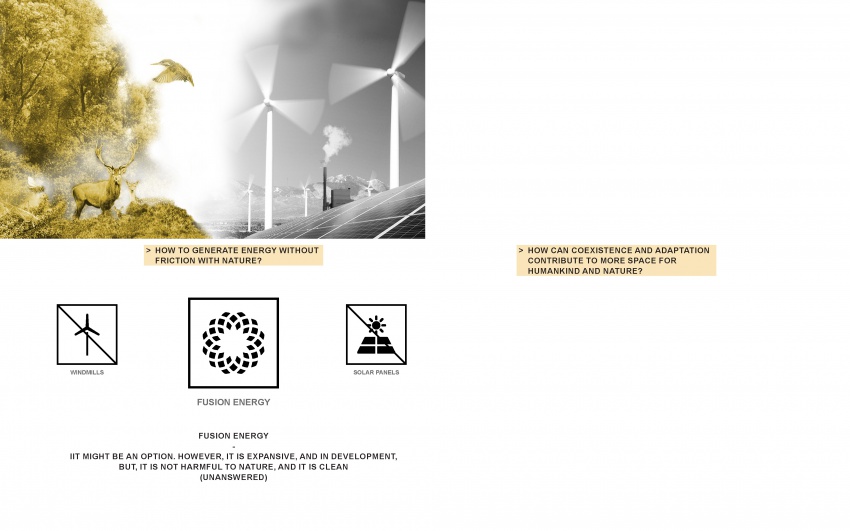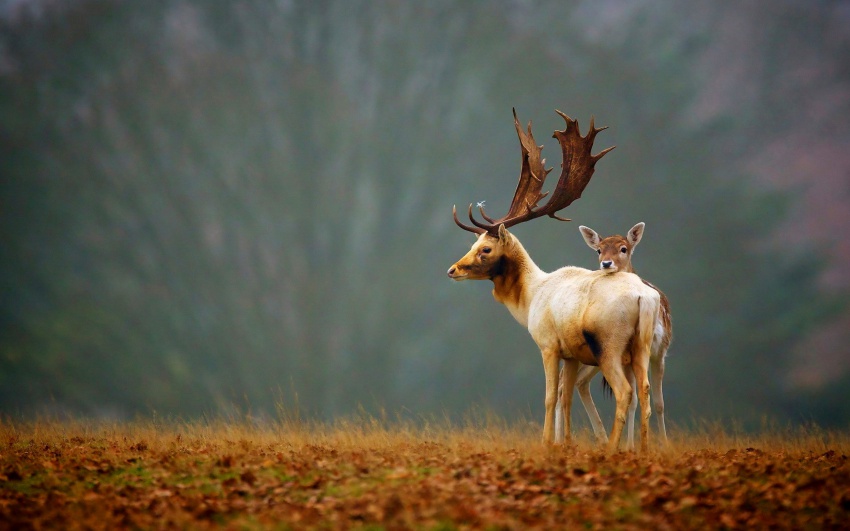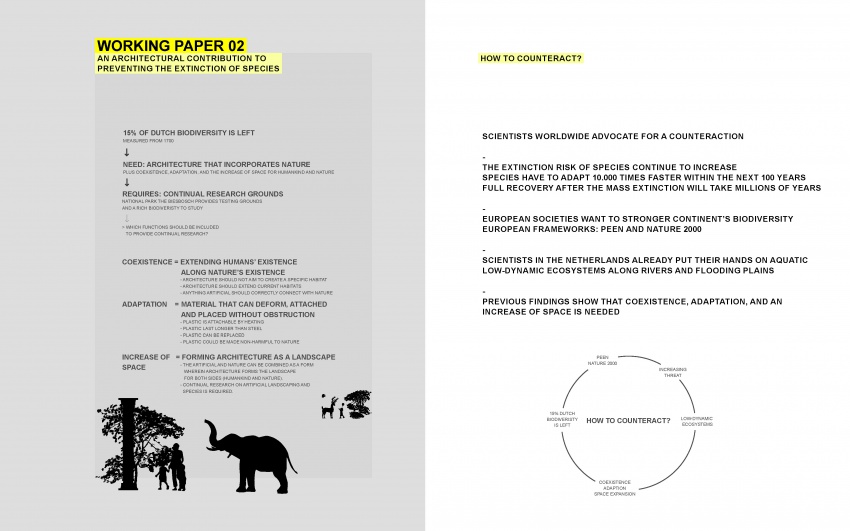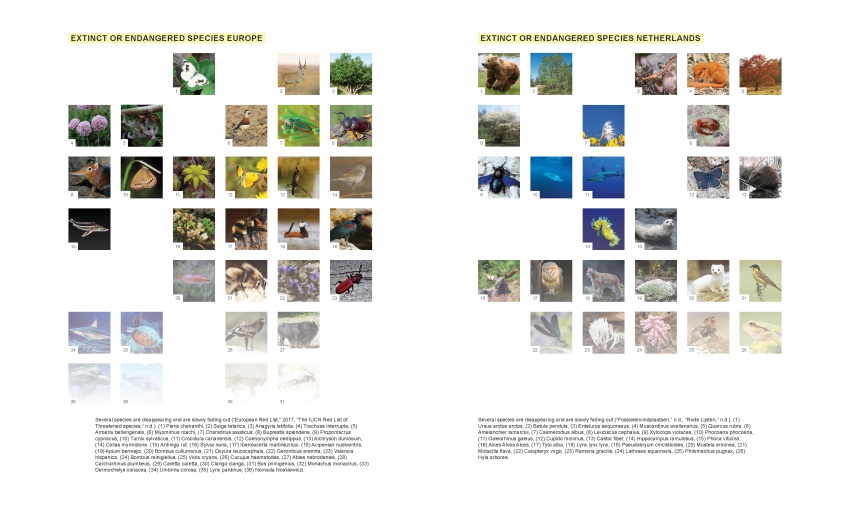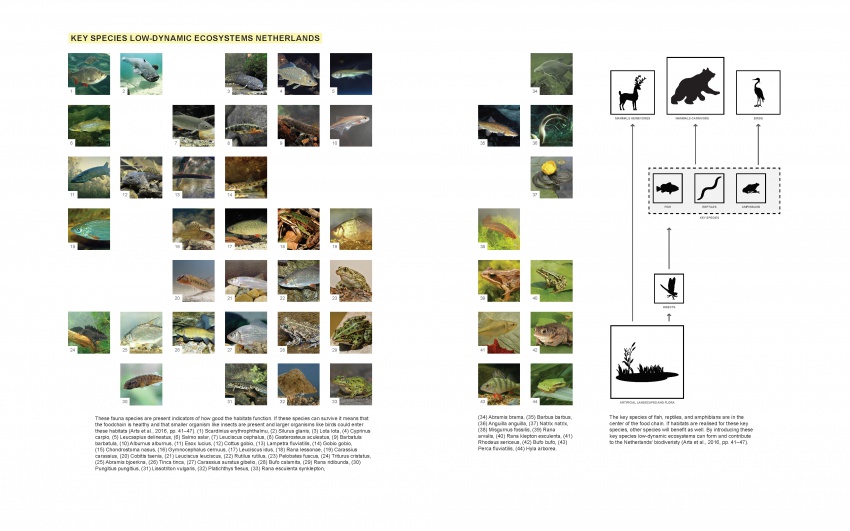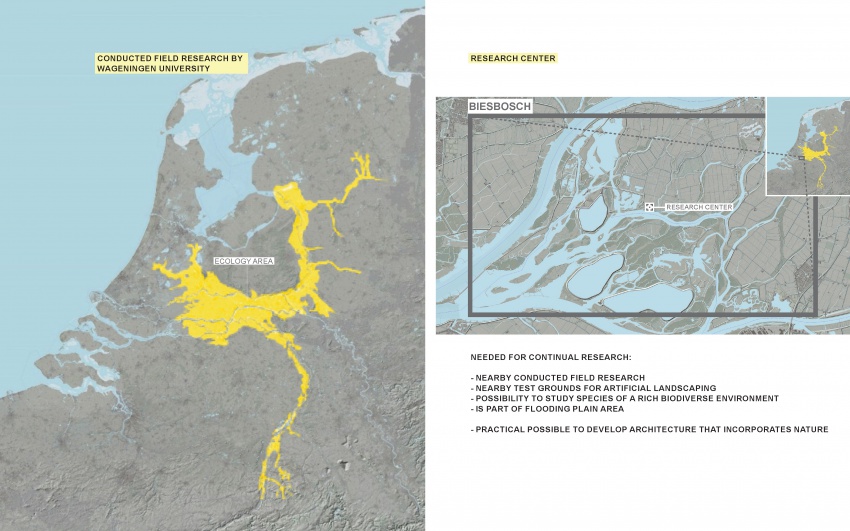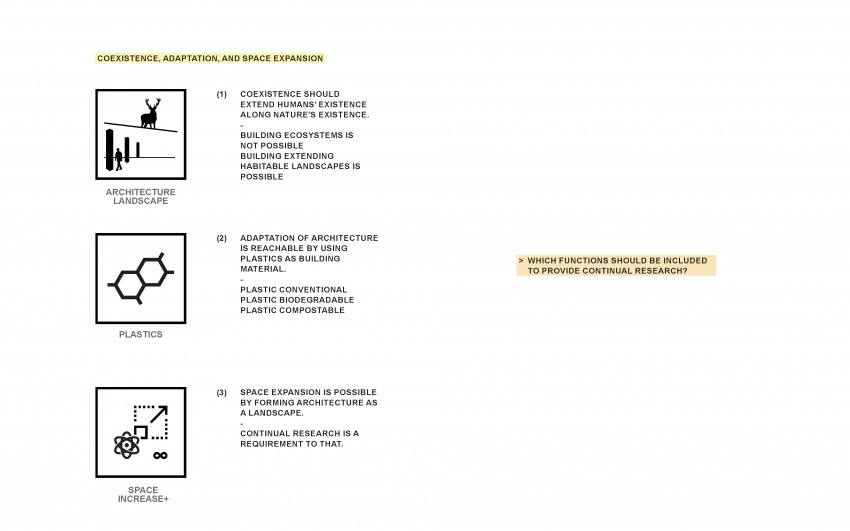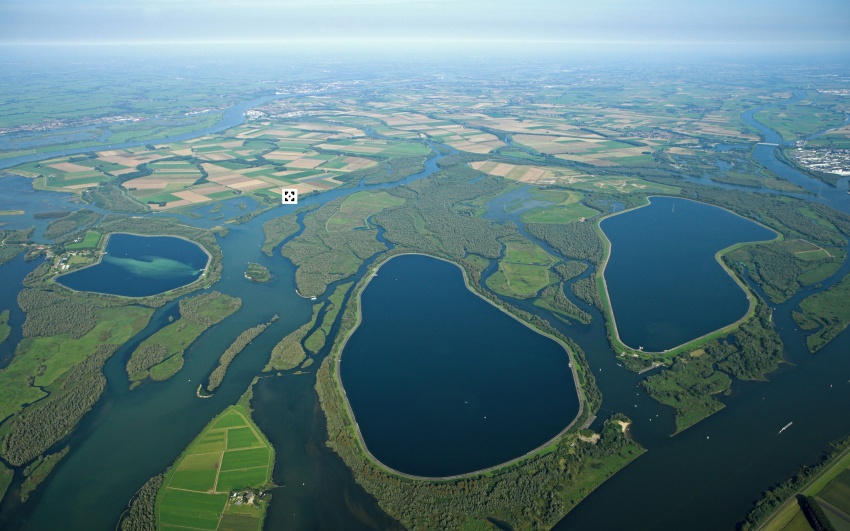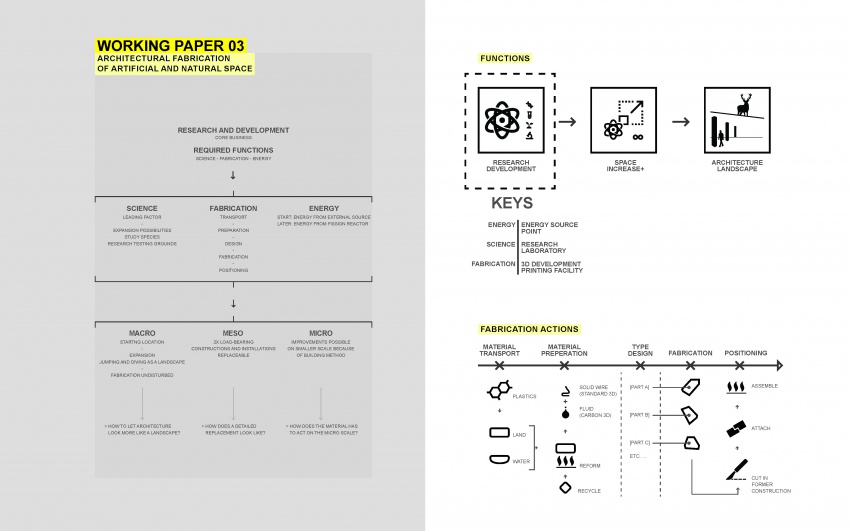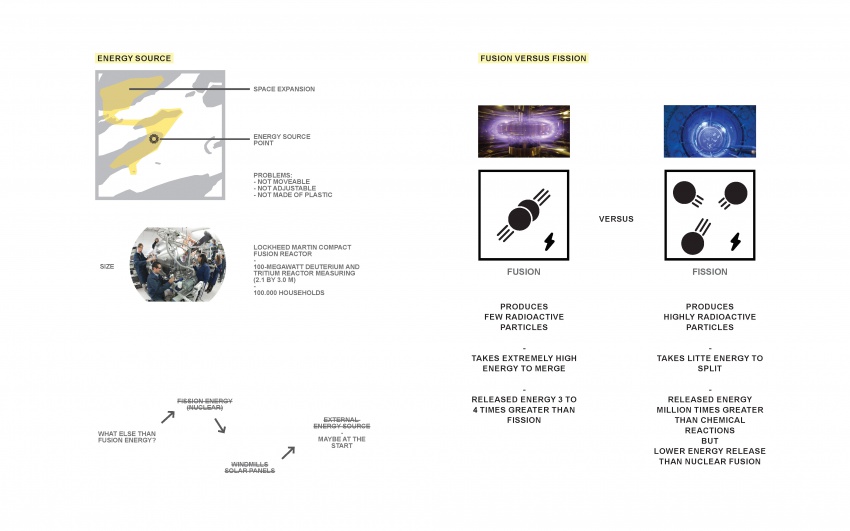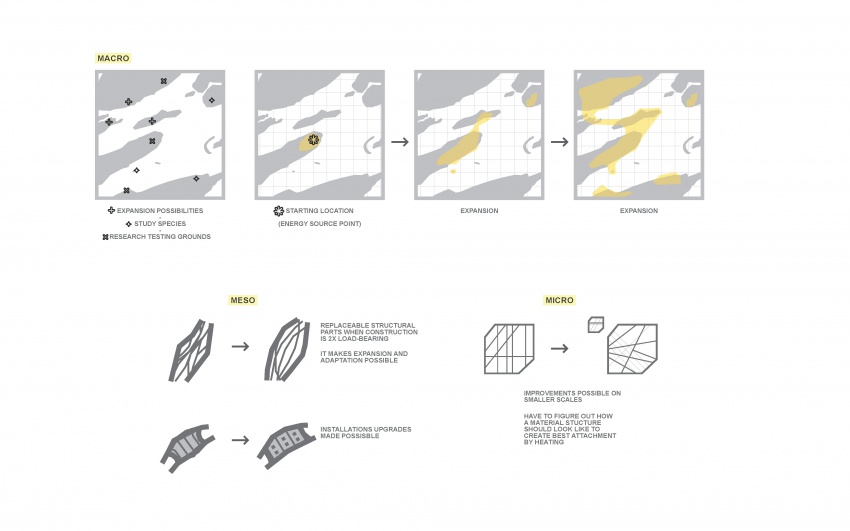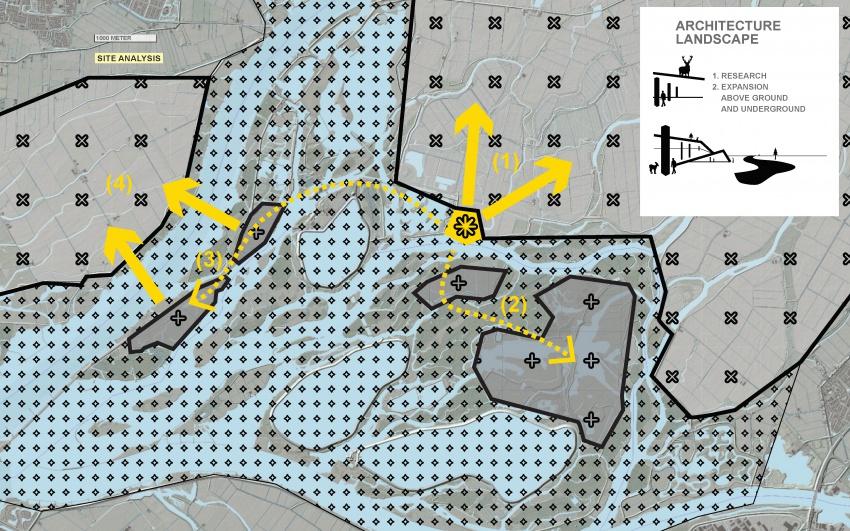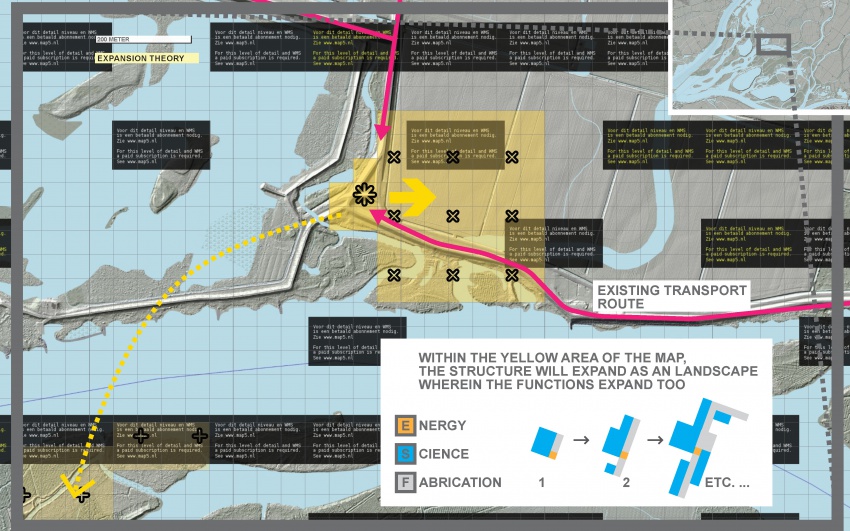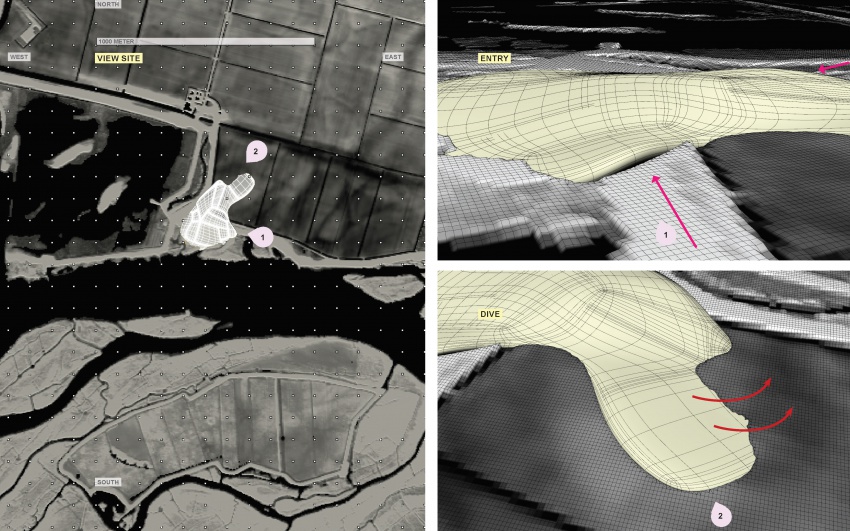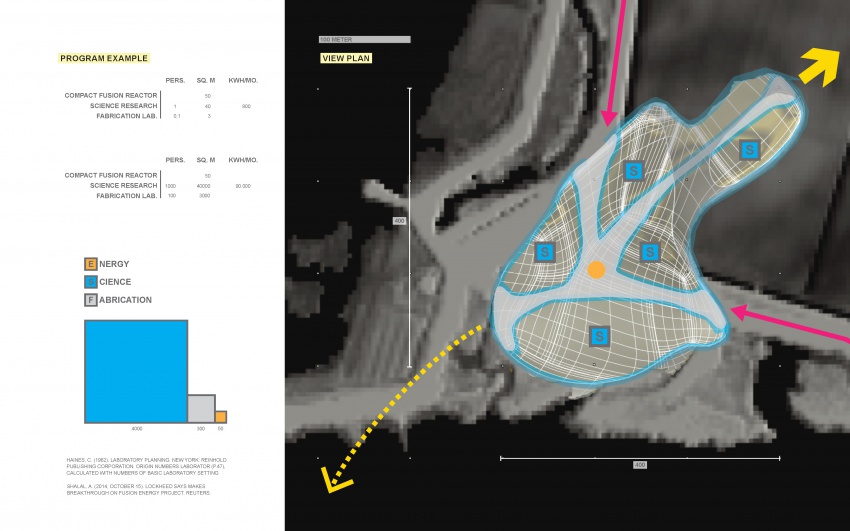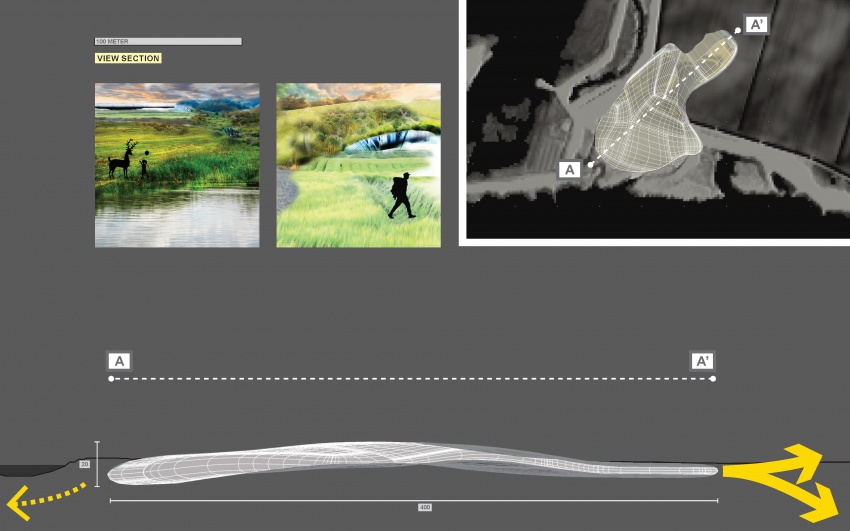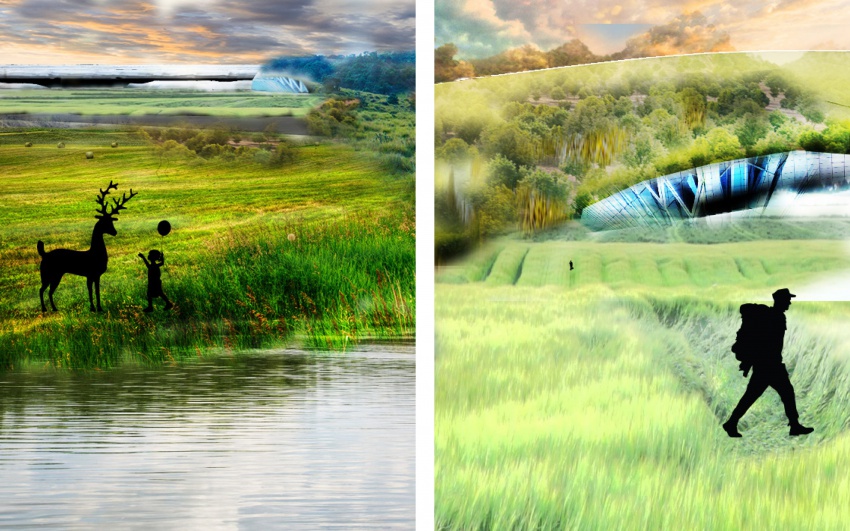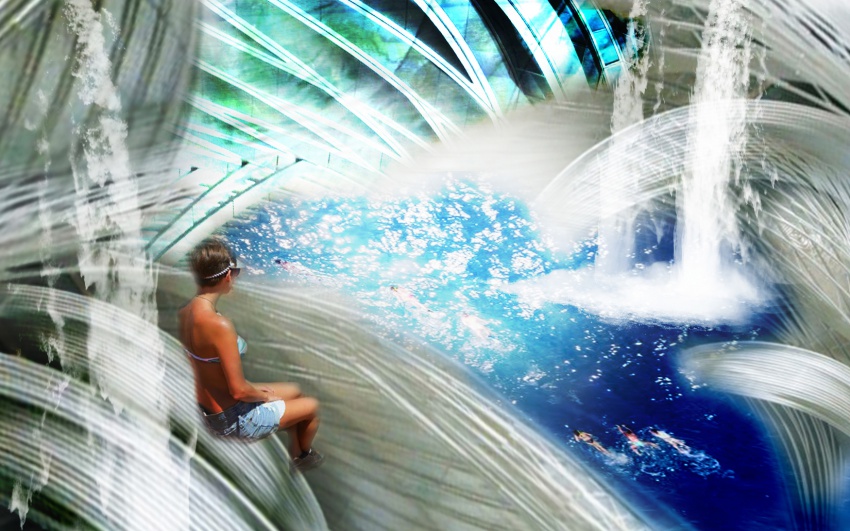project03:P2
Floris van Buren
In current times humankind devours more and more space. Its population continues to grow, and so do their cities. This form of human thinking of continual growth is not sustainable. Scientists say that in short time a catastrophe will occur, something that will hit everyone on the globe: the Anthropocene Mass Extinction.
Within hundred years species have to adapt ten thousand times faster than average. If true, many species will become extinct, and many people who depend on nature's services such as natural soil formation and fresh water will have difficulty to survive.
Today's human thinking has to alter a different direction. With increasing human populations and no stop, there must come a new kind of architecture that incorporates nature. Here not thinking about green roofs or parks, but a structure that is that significant which can form a landscape whereon nature can live beside human; which creates a coexistence.
Frameworks like PEEN and Nature 2000 advocate for an action to stop the fragmentation of natural areas. These areas must re-connect again to enlarge habitats and stronger biodiversity. Measured from 1700, in the Netherlands, there is only 15% left of its original biodiversity. It seems like this country has already experienced a mini mass extinction. Mini, because the state is small, approx. 41.5km2. However, compared to other scales, Europe holds only 40% of its original biodiversity, and globally there is 70% left. So, there is all reason to put effort into preventing more species from becoming extinct. Unfortunately, still, the extinction risk continues to increase.
Dutch ecology scientists advocate for a recovery of the aquatic low-dynamic ecosystems because only a few of it is left. In line with, the frameworks, and the idea of building large-scale architecture, this case might be compelling for designing that kind of architecture. These ecosystems are spread along many rivers and flooding plains. The scale is large, and what the Dutch scientists advocate for is related to the ideal of stronger biodiversity. So, the context is favorable, and, therefore, will be used as case study.
Sources are cited in working papers.
